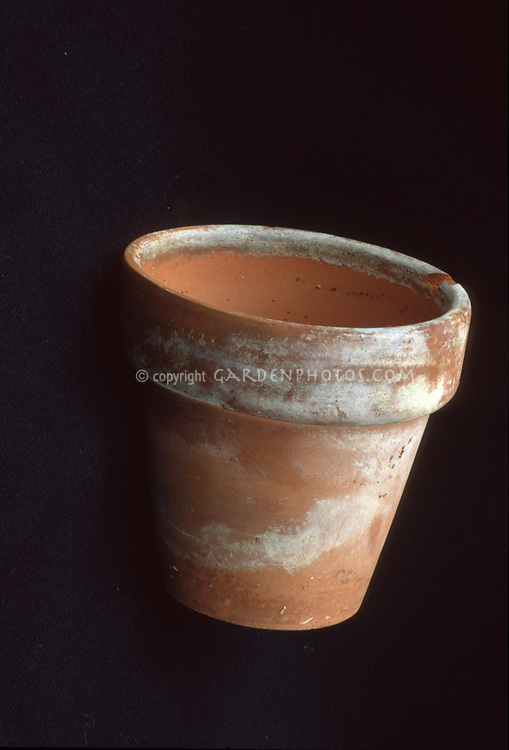Terracotta pots have long been a favorite among gardeners and plant enthusiasts, prized for their rustic charm and aesthetic appeal. However, one question often arises: do terracotta pots absorb water? This article ventures into the intricate properties of terracotta, its effects on plant health, and its practical implications for gardening.
Understanding the Nature of Terracotta
Terracotta is a clay-based ceramic material that is crafted through a process of shaping and firing. The porous nature of terracotta is one of its defining features, making it distinct from other options such as plastic or glazed pots. The permeability of terracotta allows it to interact dynamically with its environment, particularly in relation to moisture.
The porous structure of terracotta allows it to absorb a certain amount of water. When water is introduced, the terracotta’s fine pores become saturated, allowing for improved aeration. This characteristic can have a significant impact on both the plant and the overall gardening experience. One of the primary advantages of terracotta is its ability to regulate soil moisture levels, which is crucial for plant health.
Does Absorption Benefit Plants?
Understanding the benefits of water absorption is vital for any plant parent. One of the most significant advantages is that terracotta pots promote healthier root systems. By allowing moisture to evaporate slowly through the pot’s walls, terracotta prevents overwatering, which is a common issue among indoor and outdoor plants alike. Overwatering can lead to root rot and ultimately jeopardize plant longevity.
Additionally, terracotta pots provide a unique microclimate. As moisture evaporates from the pot’s surface, it helps to maintain a relative humidity level that is beneficial for many plants, particularly cactus and succulent species. These types of plants are often adapted to arid environments, making them sensitive to both excessive moisture and dry conditions.
Choosing the Right Soil for Terracotta Pots
When utilizing terracotta pots, it is essential to consider the type of soil being used. A well-draining mix is paramount for optimal growth. Common soil mixes that work well in conjunction with terracotta include those formulated for succulents or cacti, as these typically comprise sand, perlite, and organic matter like peat. This blend allows excess water to drain out while retaining enough moisture to sustain the plant, creating a harmonious balance.
Moreover, mixing in organic amendments, such as compost, can enhance soil quality, providing nutrients that will be released gradually. As terracotta is porous, it is advisable to monitor moisture levels actively and water according to the specific needs of the plant species being cultivated.
Proper Watering Techniques: How to Use Terracotta Effectively
A key component of successful gardening using terracotta pots lies in mastering the watering technique. Given their water absorption properties, it is essential to adjust your watering routine accordingly. It’s advisable to allow the top inch of soil to dry out between waterings. This ensures that the plant roots are not submerged in consistently wet soil, fostering a healthier root environment.
To optimize hydration, consider submerging the terracotta pot in a basin of water for a brief period. This technique allows the pot itself to absorb the water from the bottom up, gradually transferring moisture to the soil. After soaking, any excess water should be allowed to drain thoroughly to prevent the soil from becoming waterlogged.
Seasonal Adjustments and Environmental Factors
The environmental conditions play a crucial role in the efficacy of terracotta pots. During warmer months, the evaporation rates increase, and plants may require more frequent watering. Conversely, in colder seasons or humid conditions, the absorption rates may decrease, requiring fewer waterings. It is essential to monitor the plants and adjust watering practices based on both climate and the specific needs of the plant. Evaluating factors such as sunlight exposure, humidity levels, and temperature helps harmonize watering practices with the plant’s health.
Cleaning and Maintenance of Terracotta Pots
Maintaining the integrity of terracotta pots is also critical for their longevity and effectiveness. Regular cleaning helps to prevent salt buildup, which can occur due to the evaporation of water, leaving behind mineral deposits that can hinder water absorption over time. To clean terracotta pots, use warm water and a mild detergent. Avoid harsh chemicals, as these may compromise the pot’s material.
Additionally, after prolonged use, consider soaking the pots in a vinegar solution to dissolve mineral deposits and rejuvenate their porous nature. This will ensure that the pots continue to function as intended, providing an optimal growing environment for your beloved plants.
Conclusively, terracotta pots undeniably absorb water, and this property forms the bedrock of their utility in gardening. With an understanding of their benefits, proper soil selection, effective watering techniques, and maintenance practices, gardeners can maximize the advantages of terracotta pots. From promoting healthy roots to creating suitable humidity levels, the implications of using terracotta in your gardening endeavors are both profound and rewarding.





Leave a Comment